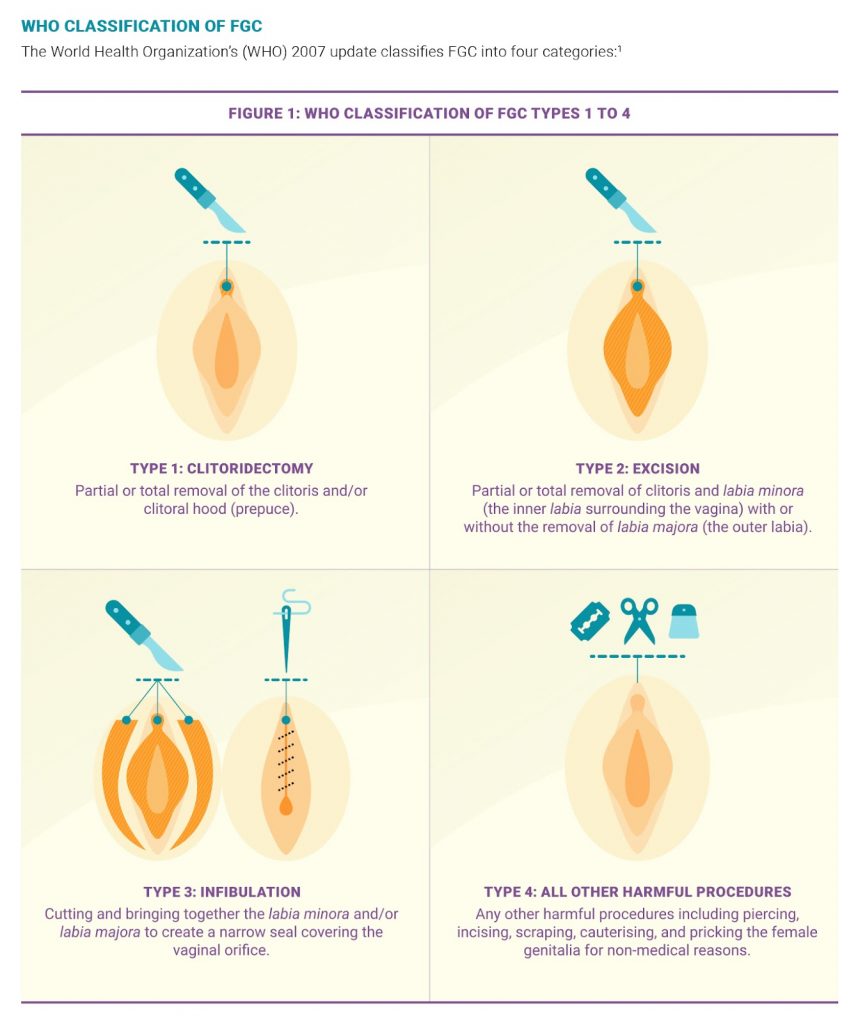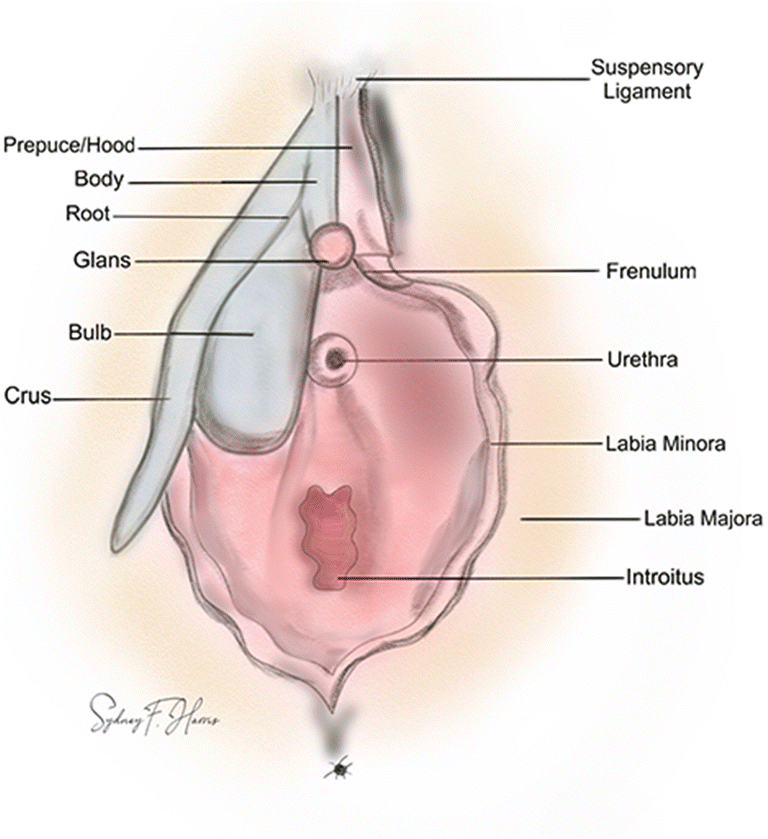An article written for a non-profit that sadly did not pass internal checks as this article may cause disharmony between neighbouring countries in Southeast Asia, so I have published it here!
Featured image by Deon Black on Unsplash.
Cited in ARROW / Orchid Project’s “Country Profile: FGC in Malaysia” (March 2024).
Not too recently, female circumcision came to Malaysians’ attention when popular Malaysian UK-based surgeon, Dr Amalina Bakri, spoke out against the backlash at her decision to not circumcise her newborn daughter. The conversation online quickly grew heated and — perhaps unsurprisingly — ugly in parts, with comments revealing disturbing attitudes towards sexualising women and girls.
As a child, I witnessed female relatives being circumcised, but the impact of female genital mutilation/cutting (FGM/C) only hit later in life, as I understood more about what it meant to women in communities around the world including my own.
What is female circumcision?
Female genital mutilation/cutting or circumcision (FGM/C) is a human rights issue that affects women and girls globally. Depending on where a girl is born and lives, she could be subject to one of four main types of FGM/C as defined by the World Health Organisation.

In Malaysia, female circumcision is practised mainly by Malay Muslims and is known as sunat perempuan, and it mostly involves needling or pricking the clitoral hood/ glans (the external clitoris) (Figures 1 and 2) (Type 4). The Malaysian mindset associates FGM/C with types 1, 2, and 3 – the horrific practices that are/ were done in the African continent that had caused death, and not the Malaysian female circumcision as no deaths or long-term adverse effects on women’s health have been recorded. However, recently, type 1 FGM/C has also been reported with the removal of a small tissue of the clitoral hood/ glans by certain Malaysian Muslim doctors.
Why circumcise a baby girl?

In Malaysia, parents may want to circumcise their daughters due to tradition and erroneous religious beliefs (believing it mandatory in Islam) backed by the perceived lack of harm to their daughters. Traditional midwives who perform this practice say female circumcision prevents women from becoming “wild” or promiscuous. Female circumcision may take place during celebratory events to commemorate the birth of the baby girl.
They certainly have no intention of harming their children, and truly believe it enhances their daughters spiritually. However, the practice has roots in the problematic belief that girls and women do not have control over their sexual drives, requiring extreme measures to be taken.
Myths about female circumcision
It’s a universal Islamic requirement
In Malaysia, there are differing fatwas, or Islamic rulings, on female circumcision. The Malaysian Federal Mufti Office (Islamic directorate) says that it is compulsory, and gives guidelines to only remove the clitoral hood, and never in a way that counts as “mutilation.” However, the Mufti Department of Perlis State, Malaysia argues that female circumcision should only be done after discussions with experts if there is a need and that there is no evidence that women who are not circumcised have excessive sexual libido. Internationally, the Grand Mufti of Egypt, considered to be one of the highest authorities in Islam, declared that female circumcision is forbidden in Islam.
Preservation of culture
There is this idea that FGM/C advocacy has colonial roots, and is seen as a way for outsiders to limit the right to exercise one’s culture and tradition. However, FGM/C is practised globally regardless of religion or culture: Type 1 FGM/C (clitoridectomy) was practised in Victorian Britain to treat “mania” or “hysteria” or depression in women. Though less common than in Asia and Africa, FGM/C without consent was still practised in the West in the 1950s. Arguably, is female genital cosmetic surgery (FGCS) such as labiaplasty a socially acceptable form of FGM/C in the West?
When comparing FGCS and FGM/C, the concept of consent is an important one. A 6-month-old baby girl is not able to consent to female circumcision, whereas an adult woman can consent to undergo FGCS. But is consent truly informed where there is societal pressure for the perfect-looking vulva? There is no such thing as the perfect-looking vulva and many women put their bodies under unnecessary danger and stress under general anaesthesia when they undergo FGCS. Any surgical procedure, including FGCS, is not without complications.
A medical perspective on female circumcision
Sexual drive (libido) is driven by what happens in the brain and other factors including one’s relationship with their partner, so the assertion that girls or women will be wild and unsatiated sexual beings without female circumcision is simply not true. However, while needling, pricking or nicking the clitoral hood/ glans may not impact one’s libido, it may impact one’s ability to experience orgasm. More studies need to be done to look into the Malaysian female circumcision and female sexual dysfunction.
I would like to emphasise that there is no medical benefit to performing female circumcision. The lack of documented medical benefit in needling, pricking, or nicking the clitoris should deter any healthcare professional from performing the procedure. In Malaysia, 20.5% of Malaysian Muslim doctors admitted to needling or pricking the clitoris, with a small number admitting to cutting the clitoris (type 1 FGM/C).
The mean clitoral hood/ glans (the external clitoris) length of female newborns is 0.67 ± 1.6 cm in a study. In another study looking at 0 to 3-year-old girls, the clitoral hood/ glans length is 0.87 cm with the clitoral hood highly adherent to the glans in newborns and becoming more retractile as age increases. Thus in female infants, it can be difficult to retract the clitoral hood from its glans to “safely” perform needling or pricking the clitoral hood separate from the actual tissue as suggested by the Malaysian Federal Mufti Office (Islamic directorate). The clitoral body (including hood and glans) (Figure 2) can grow up to 3.7 cm with the clitoral dorsal nerves within 0.6 cm of the clitoral glans in a female adult. The mean number of nerve fibres in those dorsal nerves in adults is 10,281 nerve fibres. Imagine the immense pain inflicted on the female infant undergoing female circumcision!
A little cut may be too much, as doctors are cutting growing tissue that could lead to sexual dissatisfaction later in life, due to the inability to experience orgasm adequately, which can lead to marital issues and family disharmony.
Female circumcision is not a medical procedure. It is not taught in medical schools anywhere, so doctors should not be performing them.
How can we end female circumcision?
Acknowledge the reasons behind these practices. Much of FGM/C is rooted in control of women’s bodies, but they are complex and cannot be addressed with a single solution. We must always remember that parents do not wish to harm their children. Not understanding the complexity of FGM/C, can lead to racial biases and ethnocentrism.
Recognise and respect different perspectives. Rather than prescribing a course of action, we should present parents and healthcare professionals with the facts with an emphasis on the autonomy and health of our children. Should parents be able to consent to procedures that have no medical benefit? Do parents have sole ownership over the bodies of their children?
Emphasise education. Comprehensive sexuality education, which covers female circumcision and FGM/C on top of sexual consent and safety, needs to be introduced in schools.
We need to create a safer world for our girls, and giving them agency over their bodies is a necessary step.
To learn more:
Related posts:
- A Medical Practitioner’s Toolkit to Ending FGM/C
- Suara Empuan: Terpaksa Berlapar Kerana Miskin Haid, Apa Kata Doktor | Peduli Merah
- Suara Empuan: Sanggup Mengandung Elak Datang Bulan, Apa Kata Doktor | Peduli Merah
- Malaysia: FGM/C, Period Spot Checks, and Sexual Harassment | Harvard Public Health Review
Like what you read? Subscribe to my blog.
About the Author: Hannah Nazri


